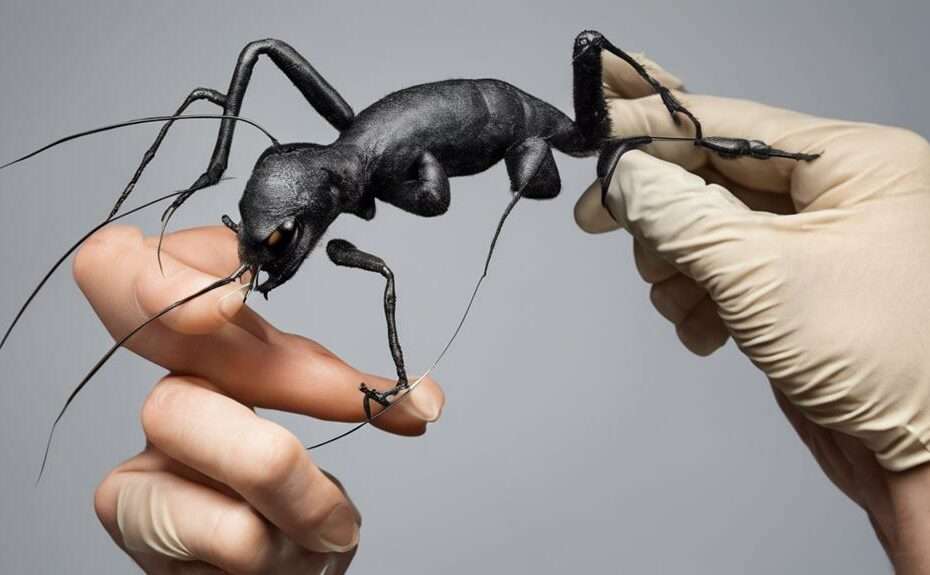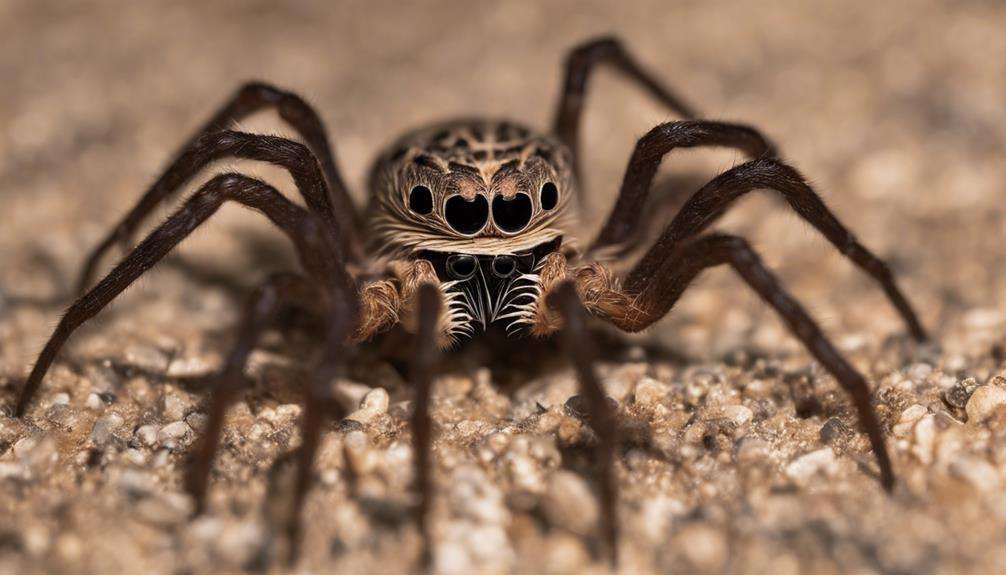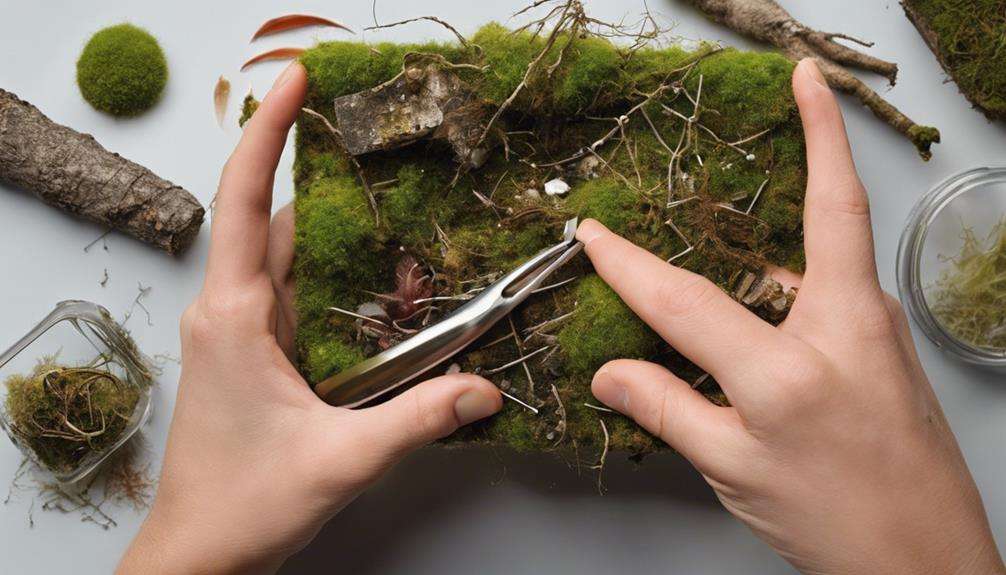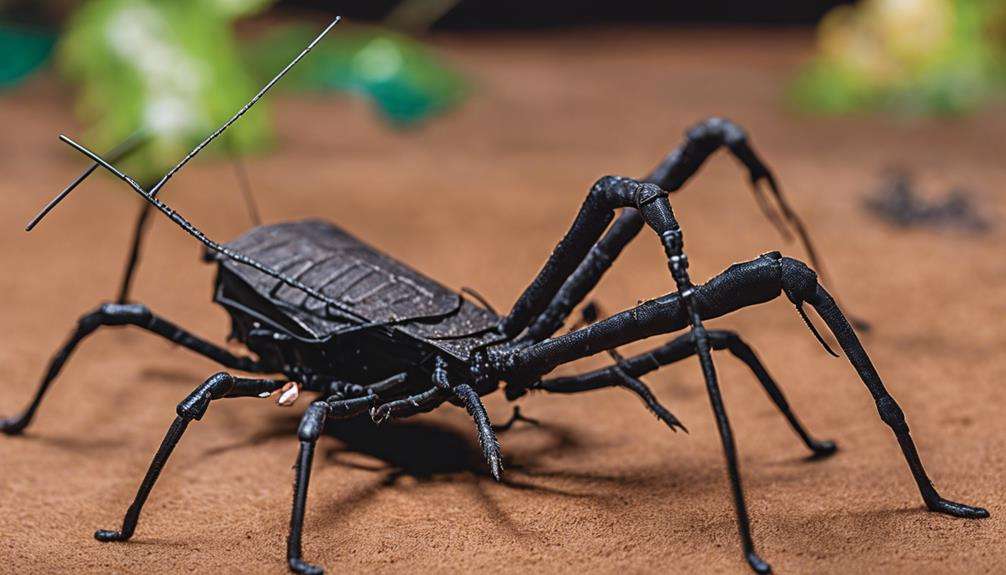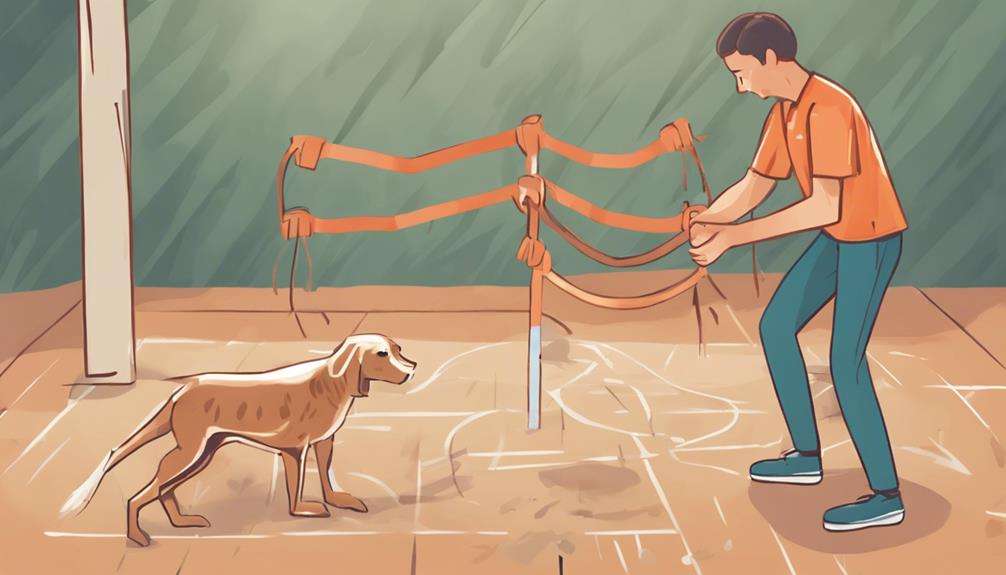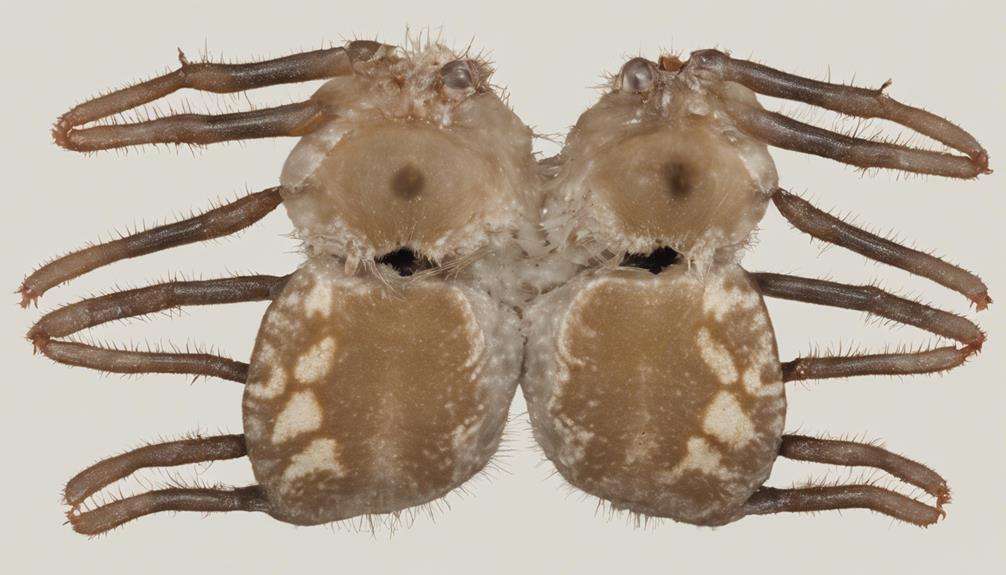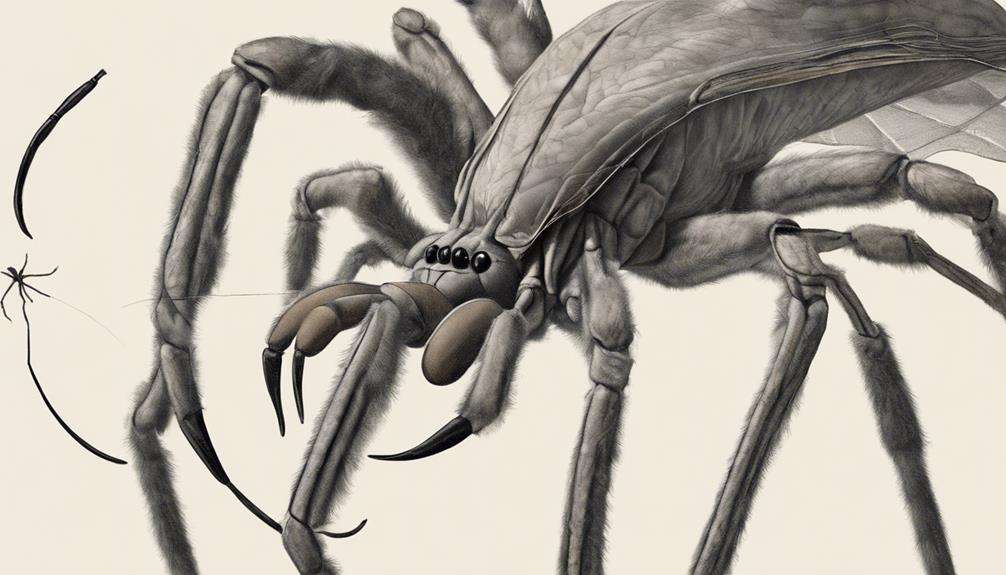When setting up your pet vinegaroon's habitat, ensuring a deep substrate for burrowing is crucial for their well-being.
However, creating a suitable environment is just the beginning of fostering a positive relationship with these fascinating creatures.
By following a few key tips, you can enhance your interactions with pet vinegaroons and ensure their happiness and health.
Remember, understanding their unique behaviors and needs is the key to a fulfilling experience as a vinegaroon owner.
Key Takeaways
- Spend daily time near the enclosure to build trust.
- Offer food by hand to foster a bond.
- Use slow movements and be patient for acclimation.
- Seek guidance from experts and utilize educational resources.
Understanding Pet Vinegaroon Behavior
When interacting with pet vinegaroons, it's crucial to understand their behavior to ensure a positive and enriching experience for both you and your unique arachnid companion. Pet vinegaroons are generally docile creatures, displaying little to no aggression towards humans. Observing their body language cues can provide insights into their mood and behavior, helping you better communicate with your pet.
It's important to note that vinegaroons may exhibit defensive behavior by releasing acidic mist when feeling threatened, so being attentive to their signals is key to avoiding stress for your pet and yourself.
Monitoring feeding patterns and activity levels is essential in caring for your pet vinegaroon, as changes in these aspects can indicate potential health issues. Providing proper care and handling techniques not only contribute to your pet vinegaroon's longevity but also enhance their overall well-being.
Providing Proper Enclosure for Vinegaroons
To ensure the well-being and comfort of your pet vinegaroon, it's essential to provide a suitable enclosure that meets their specific needs and preferences. Using a glass tank that's 2-3 times the length of your vinegaroon will offer ample space for movement and burrowing.
Opt for glass enclosures over acrylic to prevent the acidic spray of vinegaroons from affecting the tank material. For ventilation, ensure the tank is well-ventilated with thick substrates like a mix of potting soil, peat moss, and coir to facilitate burrow-building.
It's crucial to maintain moist substrates to aid in burrow construction and humidity control, although excessive wetness should be avoided. Keep the enclosure shaded and away from direct light to mimic their natural habitat, and provide a shallow water dish for humidity regulation.
Ensuring Adequate Nutrition for Vinegaroons
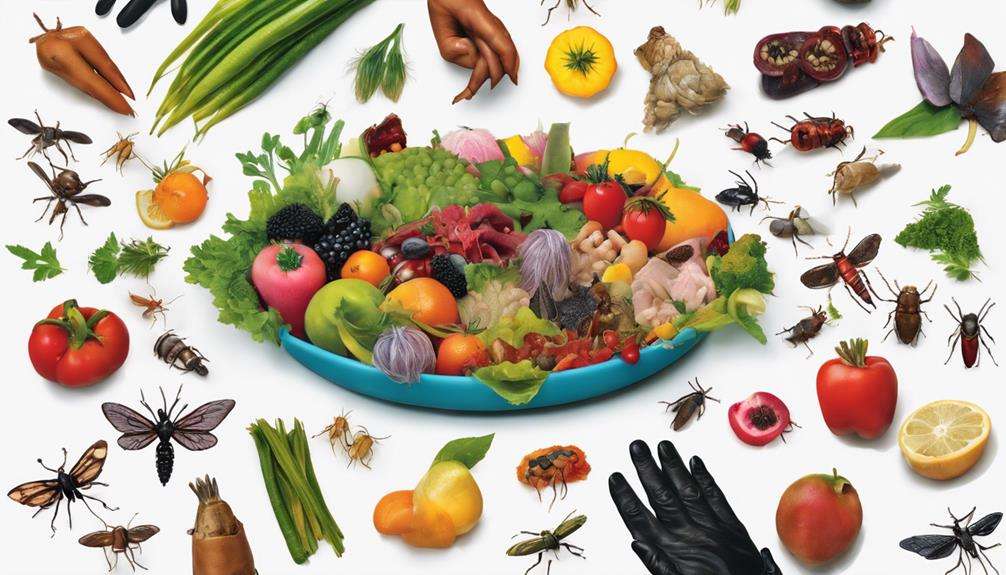
To ensure your pet vinegaroon stays healthy, provide a diverse diet consisting of live insects such as crickets, mealworms, and earthworms.
Keep a close eye on their feeding habits and adjust the frequency based on their appetite, as these creatures can go for extended periods without eating.
Avoid overfeeding by offering 3-4 crickets every 3-4 weeks for adult vinegaroons to prevent health complications and promote longevity.
Dietary Requirements
Ensuring optimal nutrition for your pet vinegaroon involves providing a diet rich in live insects such as crickets, mealworms, and earthworms to meet their carnivorous needs. These creatures have specific dietary requirements that necessitate a varied diet to maintain their health.
The diet should include proteins, fats, and sugars to ensure they receive all essential nutrients. Since vinegaroons are nocturnal feeders, it's best to offer food at night when they're most active. Adult vinegaroons typically require 3-4 crickets every 3-4 weeks to sustain proper nutrition levels.
Keep a close eye on their appetite, as these creatures may go for extended periods without eating, which is normal behavior.
Feeding Schedule
For optimal nutrition and health maintenance of your pet vinegaroons, ensure a varied diet of live insects such as crickets, mealworms, and roaches. Adult vinegaroons typically require 3-4 crickets every 3-4 weeks to stay healthy.
It's crucial not to overfeed them, as this can impact their lifespan and well-being. Since vinegaroons are nocturnal feeders, it's best to offer food at night when they're most active.
Remember to monitor your vinegaroon's appetite closely and adjust the feeding frequency accordingly. By observing their consumption habits, you can ensure they're getting the right amount of food without overfeeding.
Maintaining a proper feeding schedule is essential for keeping your pet vinegaroon healthy and thriving.
Handling and Interacting Safely With Vinegaroons
When handling and interacting with vinegaroons, prioritize your safety by wearing protective gear like gloves and goggles to shield yourself from their acidic spray. Vinegaroons may exhibit defensive behavior when they feel threatened, so approaching them calmly and gently is key to fostering a positive interaction. Avoid sudden movements or loud noises that could startle them, as this may trigger their defensive response. When guiding vinegaroons, opt for a soft brush or gentle nudging instead of grabbing or pushing them, as this can help reduce stress for both you and the vinegaroon.
Creating a calm environment is crucial during interactions with vinegaroons. Allow them to explore at their own pace and respect their need for retreat to hiding spots if they show signs of stress or discomfort. By promoting gentle interactions and being mindful of their stress levels, you can ensure a safe and enjoyable experience for both you and your pet vinegaroon.
Monitoring Vinegaroon Health and Well-being
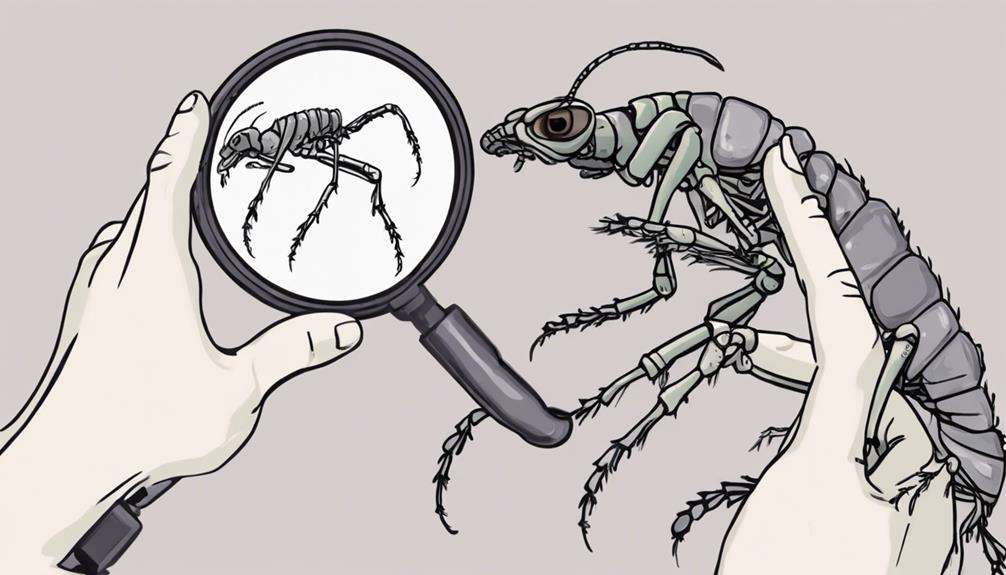
To maintain the well-being of your pet vinegaroon, it's essential to regularly monitor their activity levels and feeding habits while also keeping a close eye out for any signs of illness or abnormalities. Here are some key points to consider when monitoring the health and well-being of your Vinegaroon:
- Activity Levels: Watch how active your Giant Whip Scorpion is during the night, as they're nocturnal species and should be moving around their enclosure exploring.
- Feeding Habits: Make sure your Vinegaroon is consuming its food regularly. They're known for their diet of insects and occasional fruits, so a consistent feeding pattern is crucial for their health.
- Signs of Illness: Keep a lookout for any signs of illness such as lethargy, loss of appetite, or unusual behavior. If you notice any concerns, it's best to consult a veterinarian experienced with exotic pets for guidance and treatment.
Monitoring these aspects will help you ensure the well-being of your Vinegaroon and address any health issues promptly.
Building Trust and Bonding With Vinegaroons
To establish trust with your pet vinegaroon, spend time near its enclosure to familiarize it with your presence and scent.
Offering treats like small insects can help create positive associations during interactions.
Remember to be patient and consistent in your approach to allow the vinegaroon to feel comfortable and build a strong bond over time.
Trust Through Gentle Handling
To establish a strong and trusting bond with your pet vinegaroon, approach them calmly and gently to ensure they feel secure during interactions. When handling your vinegaroon, remember to:
- Use slow and deliberate movements to reduce stress and help them feel secure.
- Allow your vinegaroon to crawl onto your hand voluntarily to foster a positive relationship.
- Offer treats like small insects to create positive associations and make handling a rewarding experience.
Bonding With Regular Interaction
Regular interaction is crucial for building trust and bonding with vinegaroons. Spend time near their enclosure daily to familiarize them with your presence. Offering treats like small insects or fruit can create positive associations. Use a soft paintbrush to gently stroke their back for tactile stimulation. Avoid sudden movements or loud noises to prevent startling them. Gradually increase handling sessions to build trust. Consistent, gentle interactions will help your vinegaroon feel more comfortable and secure around you, ultimately deepening your relationship.
Patience in Gaining Trust
Developing trust and bonding with vinegaroons requires patience and consistency in your interactions to gradually build a strong connection with these unique arachnids. To gain their trust effectively, follow these essential tips:
- Spend time near the vinegaroon's enclosure daily to familiarize them with your presence.
- Use slow movements and avoid sudden gestures to prevent startling the vinegaroon.
- Offer food by hand to associate your presence with positive experiences.
Seeking Professional Guidance When Needed
For expert advice on health issues or unusual behavior in your pet vinegaroons, consult with experienced exotic pet veterinarians specializing in arachnid care. These professionals have the expertise to diagnose and treat any health concerns your vinegaroon may have. Additionally, seek guidance from reputable breeders or experienced vinegaroon owners for specific care tips or breeding advice. Their practical knowledge can be invaluable in ensuring the well-being of your pet.
Joining online forums or communities dedicated to exotic pets is another excellent way to seek professional guidance when needed. Experts in these platforms can provide valuable insights on interacting with vinegaroons based on their experiences. Attending workshops or seminars on arachnid care can also enhance your skills in handling and caring for pet vinegaroons. These educational resources offer hands-on learning opportunities and the chance to interact with knowledgeable professionals in the field.
Utilize resources like care sheets, books, and online articles from trusted sources to educate yourself on proper interaction and care for vinegaroons. By seeking professional guidance from various sources, you can ensure the health and happiness of your pet vinegaroon.
Frequently Asked Questions
How Do You Handle Vinegaroon?
When handling vinegaroons, wear protective gear. If sprayed, wash skin immediately. Clean wounds if bitten. Approach with respect. Understand behavior. Feed appropriately. Provide suitable habitat. Bond gradually. Offer enrichment. Consider health needs. Always prioritize safety and well-being in interactions with pet vinegaroons.
Is a Vinegaroon a Good Pet?
A vinegaroon can make a great pet with proper care, safe handling, and suitable housing. Their fascinating behaviors, low-maintenance needs, and docile nature make them a unique and captivating companion for those looking for an intriguing arachnid friend.
Can You Hold Vinegaroons?
You should avoid holding vinegaroons due to their acidic defense mechanism. It's safer to observe them in their enclosure. Protect yourself from potential harm by respecting their natural defense. Bond with them through safe observation.
Can You Keep Vinegaroons Together?
When keeping vinegaroons, remember this crucial advice: each must dwell alone in its own domain. Cohabiting invites danger, leading to aggression, injury, or even demise. Choose safety; house them apart for a harmonious and secure habitat.
Conclusion
Now that you have mastered the art of caring for pet vinegaroons, you're ready to embark on a journey filled with fascinating interactions and bond-building experiences.
Remember, patience and understanding are key when it comes to these unique creatures. So go ahead, dive into the world of vinegaroons with confidence, and watch as your relationship with them blossoms like a beautiful, flourishing garden.
The possibilities are as endless as the stars in the sky!
